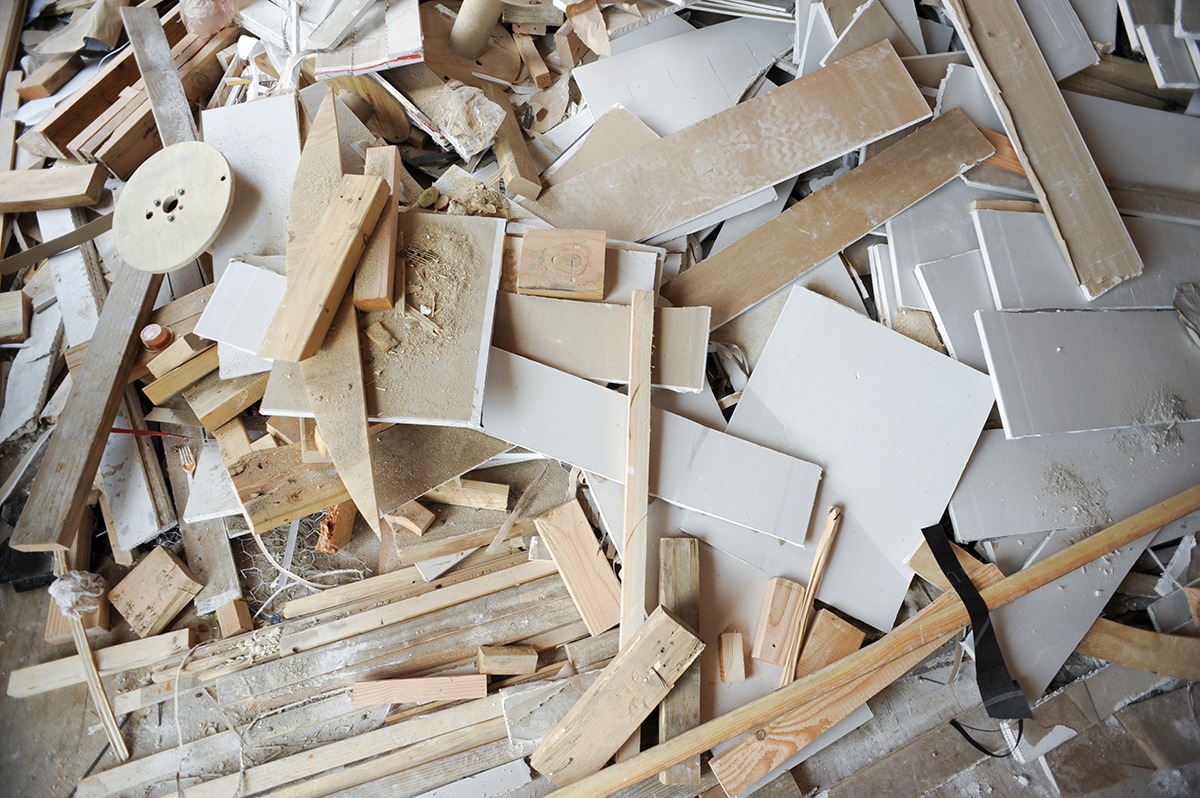The construction industry as a whole is facing intense pressure from the European Union and the UK Government to reduce waste, improve performance and expand recycling – and it is easy to see why. Recent figures published by the UK Government reveal the construction industry is responsible for generating around 120 million tonnes of waste per annum, which includes the shocking figure of 13 million tonnes of unused material.
This amount of waste not only has an impact on the UK as a whole, as to put it bluntly, we are running out of places to put the waste. But it also has an effect on budgets – the more waste a construction project produces, the more negative an impact it has on profit margins. Some construction companies have been known to factor in a cost for waste from the beginning of a project. However, we think this is self-defeating really, and something that will become more and more unacceptable as the world carries on pushing towards finding ways for construction and manufacturing to be more sustainable and environmentally friendly.
So, to figure out a solution to all of this waste, we first need to fully understand where all of this waste comes from. This is where the eight wastes of construction come in.
The eight wastes of construction are based on the seven wastes of manufacturing, sometimes known as ‘Muda’ – the concept of lean process thinking, developed by Taiichi Ohno, the Chief Engineer of Toyota. Although they are aimed at the manufacturing industry, it has been found that they also fit the construction industry.
So, what are the eight wastes?
Waste One: Defects
Defects can be defined as flaws in the design of a building which make it not fit for purpose. This can add extra costs to the construction project due to paperwork having to be changed, or replacement materials ordered, and so on. Defects can be minimised through the use of stringent quality controls at all levels and the application of standardised work plans. One of the main benefits of BIM is that it allows for collaborative working for everyone on the project, meaning that defects should be smoothed out in the design process before the first brick is even laid.
Waste Two: Overproduction
Overproduction can be simply explained as too much of something being produced, or materials being delivered too early in the project and so they then have to be stored somewhere. Overproduction is a waste as it ties up working capital. Overproduction can be minimised through the use of well-defined procedures for every construction process and task.
Waste Three: Waiting
The waste of waiting occurs when people are either waiting on material, idle equipment or a response from someone else in the project team – which usually means that work has to stop. The main way that waiting time can be reduced is to have adequate staffing levels to reduce the number of bottlenecks.
Waste Four: Unused Talent
This is often seen as the worst waste – the under-utilisation of people’s skills, talents and knowledge which can have a detrimental effect on an organisation. The key solution to unused talent is target training to enable employees to grow and develop, and also the provision of forums to share ideas.
Waste Five: Transportation
Waste in transportation means the movement of people, tools, inventory, equipment or material further than necessary. Too much transportation can waste time, increase the risk of product damage and deterioration, and therefore lead to increased costs. The best way to reduce transportation waste is to identify unnecessary journeys and remove them from the process.
Waste Six: Inventory
This can be a difficult waste for people to understand, as in many industries inventory is not a waste but an asset, and suppliers often give discounts for bulk purchases. However, having excess construction materials risks having to deal with needless costs due to expired material and costly storage. Having standardized processes, documenting resources accurately and keeping inventory tidy can go a long way to reducing inventory waste.
Waste Seven: Motion
Motion waste is similar to transport waste in that it covers the unnecessary movement of people, equipment or machinery – such as walking, lifting, reaching, bending, stretching and moving in general. The solution to movement waste is to decrease the distance between tasks and make it easier for people to get hold of the things that they use most often.
Waste Eight: Extra-Processing
Extra-processing waste refers to doing more work, adding more components, or having more steps in a process than what is required by the customer. On a practical level, the easiest way to reduce extra-processing is to eliminate documentation, sign-off processes and meetings.
As you can see, all of the eight construction wastes have a negative impact on costs, time and resources through inefficiencies throughout the project. There has never been a more important time for us all to tackle sustainability across our supply chain and this is something that the team here at The CAD Room are keen to help with.
Through the use of our BIM services, you can examine your processes and ensure you are taking a holistic whole supply chain approach to your construction projects, which should reduce the production of waste. To find out more about how we can help with this, please call us on 0161 427 0348 or email us at office@thecadroom.com

